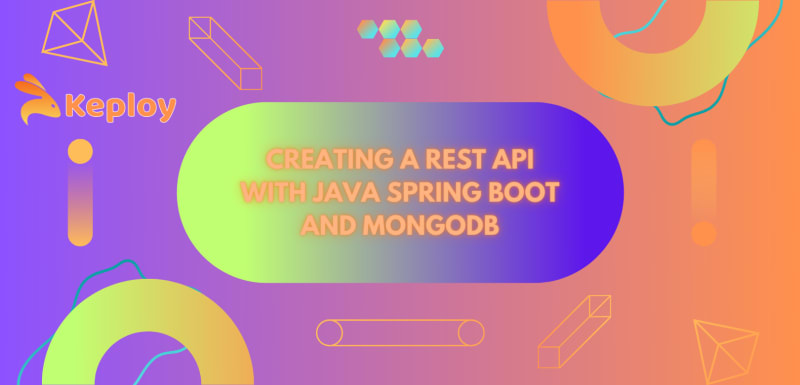Introduction

In today's fast-paced digital world, building efficient and scalable web services is crucial for delivering seamless user experiences. One of the most popular combinations for creating a rest api with Java Spring Boot and MongoDB. In this article, we will explore how to develop a RESTful API with these technologies, enhancing the testing with "Keploy."
What is Keploy?
Keploy is a developer-centric backend testing tool. It makes backend tests with built-in-mocks, faster than unit tests, from user traffic, making it easy to use, powerful, and extensible.
Setting Up the Environment
Before we dive into the code, let's make sure we have our environment properly set up. You will need to install rest api Java, Spring Boot, and MongoDB, along with Keploy.
- Java: Ensure you have the Java Development Kit (JDK) installed on your system. You can download it from the official Oracle or OpenJDK website.
- Spring Boot: Spring Boot simplifies application development by providing pre-built templates and libraries. You can set up a Spring Boot project using Spring Initializr or Maven/Gradle.
- MongoDB: You can install MongoDB locally or use a cloud-hosted service. Remember to configure MongoDB properly with your Spring Boot application.
- Keploy: Install Keploy locally on your system via the one-touch installation mentioned in Keploy docs.
Creating a Spring Boot Application
Let’s begin by creating a basic Spring Boot application with keploy in mind.
- Create a Spring Boot project using Spring Initializr or your preferred method. Be sure to include the necessary dependencies like Spring Web, MongoDB, and Lombok for enhanced code readability.
- Define your MongoDB configuration in the application.properties or application.yml file.
spring.data.mongodb.uri=mongodb://localhost:27017/your-database-name
- Implement a RESTful API by creating controllers and defining your endpoints. Here’s an example of a simple controller class: @RestController @RequestMapping("/api") public class YourController { @Autowired private YourRepository repository; @GetMapping("/your-resource") public ResponseEntity<List<YourResource>> getAllResources() { List<YourResource> resources = repository.findAll(); return ResponseEntity.ok(resources); } // Add more endpoints for CRUD operations }
- Implement the data model and the repository interface for MongoDB interaction. You can use annotations such as @Document and @Field to map your Java objects to MongoDB documents.
- Build and package your Spring Boot application into a JAR file using Maven or Gradle.
Testing with Keploy
Now, it’s time to leverage keploy to test your application. Here are the basic steps:
- To start recording the API calls, run keploy in record mode along with the application using the following command: keploy record -c "CMD_TO_RUN_APP"
- Once all the API calls are recorded, press CTRL + C to stop the application from running in record mode.
- Once the application stops, a folder named keploy is generated with all the recorded API calls as test cases and data mocks in a .yml file.
- Now, to test your application with the recorded test cases and data mocks, run keploy in test mode along with the application using the command: keploy test -c "CMD_TO_RUN_APP" -- delay 10
- After running all the test cases, keploy will show a detailed report and also store the report in the folder keploy with all the passing and failing test cases with a final result of whether the application passed the test or not.
Conclusion
This article explored how to build a robust REST API with Java, Spring Boot, and MongoDB while integrating Keploy as a vital API testing tool. This combination of technologies empowers developers to create efficient and scalable web services, ensuring a seamless user experience. By incorporating Keploy into the development process, you can enhance the reliability of your application. With the right tools and techniques, you can simplify both the development and testing processes, making your application more resilient and adaptable to changing needs. Happy coding!


















